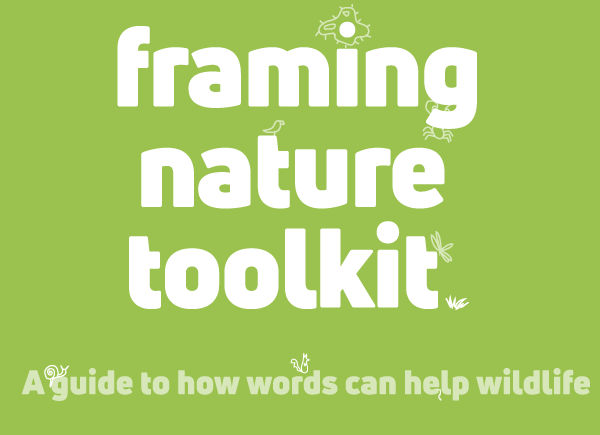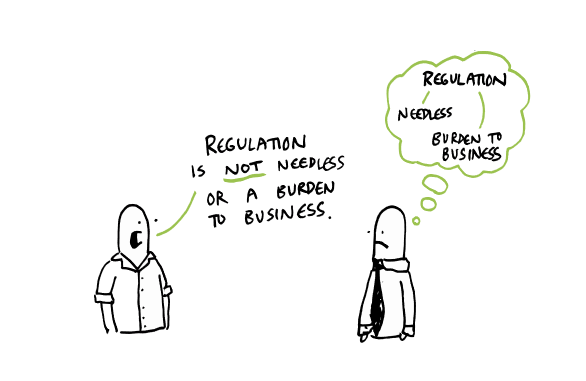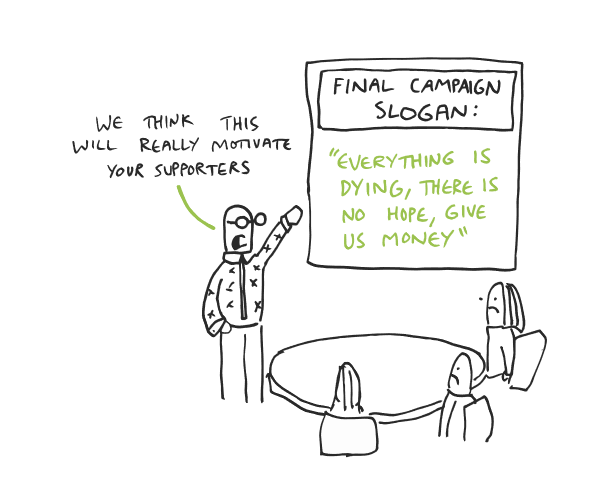
Reviewed by Ian Carter
My wife picked up a copy of this short book at a recent Natural England event where Ralph was giving a talk. To be honest I was rather surprised they let him inside the building given how rude he has been about them – including that logo with the roof.
The guide is about 90 pages, with photos, diagrams, a few of the trademark cartoons and short, easily digested, paragraphs. It’s all about how words can be used to maximum effect when seeking to get your message across. And it all hangs on the concept of frames which he defines as ‘related bits of information stored in memory’ or ‘mental structures’. These structures can be engaged by an image, phrase, or even a carefully chosen word in order to tap into a set of associations or an implied way of viewing the world.
Frame your message well and it is more likely to resonate with your audience and more likely that they will retain it and be influenced by it. It’s something we all do instinctively to some extent. But as the examples show, there are traps and pitfalls that are all too easy to fall into. At best these will weaken your message, and at worst they can damage the cause you are trying to advance.
 You may believe that wildlife regulation is not an unnecessary burden to business but it would be best to frame your message without using those words. Otherwise you risk reinforcing existing frames that paint it in just that light. The term ‘red tape’ is a powerful example of a frame used to great effect by those seeking to sweep away wildlife legislation – ask 100 people if we should have less of it and you can imagine the response.
You may believe that wildlife regulation is not an unnecessary burden to business but it would be best to frame your message without using those words. Otherwise you risk reinforcing existing frames that paint it in just that light. The term ‘red tape’ is a powerful example of a frame used to great effect by those seeking to sweep away wildlife legislation – ask 100 people if we should have less of it and you can imagine the response.
If you want to see more power generated from wind turbines then avoid saying that they are not noisy. Again, that just plays to an existing frame (based mainly on older technology) that associates turbines with excessive noise. It would be better to say that modern turbines are graceful and quiet.
 Another key message is about avoiding too much doom and gloom. If you want to inspire interest and support (and donations) then wildlife should not be portrayed as helpless victims. You need to give people some hope for the future. So, ‘Water Voles are heading for extinction if they don’t get help’ might just depress people and leave them wandering away in despair. ‘Together we can create new habitats to help Water Voles thrive’ would be better.
Another key message is about avoiding too much doom and gloom. If you want to inspire interest and support (and donations) then wildlife should not be portrayed as helpless victims. You need to give people some hope for the future. So, ‘Water Voles are heading for extinction if they don’t get help’ might just depress people and leave them wandering away in despair. ‘Together we can create new habitats to help Water Voles thrive’ would be better.
There are many more examples, all well presented and easy to assimilate. Later sections touch on developing new frames, the use of framing in strategies (perhaps that’s why NE let him in) and the use of images. There are also exercises to help teams of people develop this approach in their own work.
If you already work in communications then much of this may be familiar but you will still get some valuable new insight and ideas. If you are new to communications then this is required reading.
These days there aren’t many people who work in conservation who don’t at some stage communicate their work to the rest of the world, even if that is no more than the occasional tweet or Facebook post. Getting the words right when you only have a handful to play with is all the more important. This guide can help you do just that.
Framing nature toolkit: A guide to how words can help wildlife, by Ralph Underhill is published as a booklet by the Public Interest Research Centre Limited but is also available as a free download online.
[registration_form]
This also applies to predator reintroductions. Merely emphasising how people can avoid problems with predators via responsible livestock husbandry reinforces the perception that they may be problematic, so it is better to spend equal time reinforcing the positive benefits those predators might bring (e.g. tourist revenue, mesopredator or “pest” control, trophic cascades, invasive species control, deer control leading to tick reductions with associated drop in Lymes disease, or even – as in one recent study on tigers, a decrease in overall livestock losses etc.).
Lots of useful information in this toolkit.
I’d also recommend ‘Branding Biodiversity’ by Futerra, which you can download here:
https://www.wearefuterra.com/wp-content/uploads/2015/10/Branding_Biodiversity.pdf
And for a broader guide to effective campaigning techniques, ‘Blueprint for Revolution’ by Srdja Popovic.